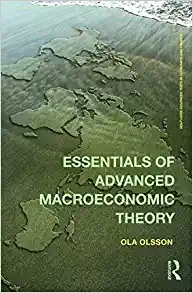Question
The world consists of three countries, A, B, and C only. Table 1 provides some macroeconomic data for these three countries. A B C Gross
The world consists of three countries, A, B, and C only. Table 1 provides some macroeconomic data for these three countries.
A | B | C | |
Gross domestic product, GDP | 60000 | ||
Consumption, C | 15000 | 41250 | |
Investment, I | 4500 | 15000 | |
Government spending, G | |||
Taxes, T | |||
Exports of goods & services, EX | 13750 | ||
Imports of goods & services, IM | |||
Private saving, SP | 10500 | ||
Public saving, SG | 4500 | ||
National saving, S | 18750 | ||
Net unilateral transfer | 0 | 0 | 0 |
Current account, CA | 750 | ||
Sales of country's financial assets to foreign residents | 12360 | ||
Purchases of foreign financial assets by domestic residents | 5145 | ||
Official reserve transactions, ORT | |||
Financial account, KA | |||
Capital account |
Note: Empty cell only means the data is not given in the question.
Country-specific information:
Country A:
Purchases of the country's final goods and services by domestic households and foreign households represent 50% and 30% of the country's GDP respectively.
The government runs budget deficit of 4500.
The central bank does not carry any international transactions.
Country B:
The government spends 12.5% of the country's output on final products
Country B's imports of foreign goods & services exceed Country C's imports of foreign goods & services by 1000.
Residents sell 9000 worth of financial assets to foreign investors.
Country C:
The country allocates 20% of output on the accumulation of (physical) capital.
The level of taxes collected is the same as the level of investment.
The country runs a current account surplus of 3750.
The stock of official reserves increases by 880.
Other information:
The central banks of all three countries do not make any transaction with the private sector. In other words, the central banks only make transactions with other countries' monetary authorities.
Residents of pay out (total) asset transfers of 550 and 230 to residents of A and C respectively. These transfers are non-market transactions. Also, there are no assets transfers between residents of A and C.
a) Complete Table 1. You are not required to provide explanations to your answers for this question; however, you should understand the logic behind so that you could work on similar questions in the future.
b) Based on your answer in part (a), dose any country run twin deficits? If yes, which country? If not, explain.
Step by Step Solution
There are 3 Steps involved in it
Step: 1

Get Instant Access to Expert-Tailored Solutions
See step-by-step solutions with expert insights and AI powered tools for academic success
Step: 2

Step: 3

Ace Your Homework with AI
Get the answers you need in no time with our AI-driven, step-by-step assistance
Get Started


